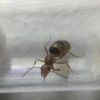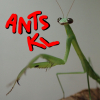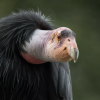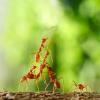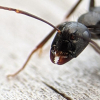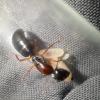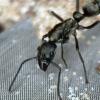July 24th, 2022
These queens seem to be outcompeted by the also invasive O. Haematodes, likely due to their larger size. She is currently housed in a 27mm test tube, half with dry substrate, a cork divider allowing her to pass though, and a thick layer of moist sand. The queen seem to not dig in wet sand for quite a while, preferring dirt with sticks and leaves. It took this queen 2 weeks to start a small chamber in the dark.
Queen has some chubby larvae. This queen seems to prefer small prey in big numbers, rather than big prey in small numbers. She quite enjoys termites and flies in batches of 2-5.
If anyone has any name suggestions, let me know!
A basic shot of a queen
[attachment=12689:33ED7CE0-CCBB-40BF-A98E-D744D6694CCA.jpeg]
Founding chamber and a first or second instar larvae(Queen in photo)
[attachment=12693:9EFAA917-635C-4D01-B50D-499907EED89C.jpeg]
More brood
[attachment=12691:2190A98D-5D8F-4AC6-BCE8-0A4A357E6446.jpeg]
Edited by FloridaAnts, July 26 2022 - 4:30 PM.

